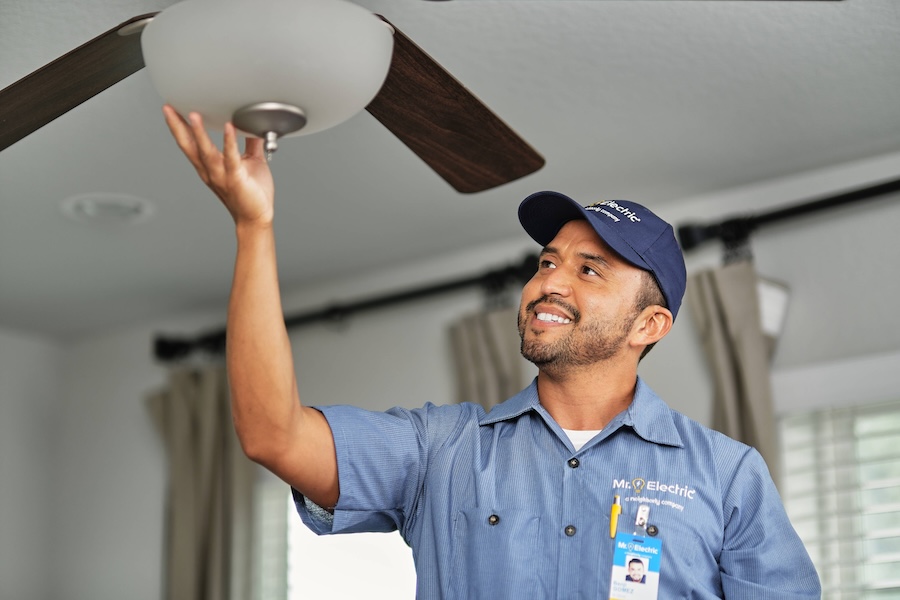Emergency Certified Electricians in Dallas, TX.
Call this Monday to Get 10% OFF
Emergency Certified Electricians in Dallas, TX.
Call this Monday to Get 10% OFF

Ceiling fans provide a cost-effective way to enhance comfort and complement your home’s décor. These fixtures can help greatly in the summer months by creating a wind chill effect through air circulation. But did you know ceiling fans can also be beneficial in the winter? By circulating warm air that rises and accumulates near the ceiling, these fixtures can make you feel warmer and lower your energy costs. They key to ceiling fan usage lies in the fan direction.
In this guide, our electricians will explore why ceiling fan direction matters, what settings you should be using during different seasons, and how to get the most out of your ceiling fan year-round. The next time you need ceiling fan installation in your home or office, reach out to Mr. Electric.
Ceiling fans don’t cool or heat the air like HVAC systems. Instead, they circulate air to create a wind-chill effect in summer or help distribute warm air during the winter. This means the direction of the blades makes a huge difference in how the air feels and whether you're helping or hindering your heating and cooling efforts.
During the hot summer months, your ceiling fan should spin counterclockwise. When set to this direction, the blades push air downward, creating a cooling breeze that evaporates sweat and makes you feel cooler even though the temperature in the room doesn’t actually change.
When used in conjunction with your air conditioner, this breeze allows you to raise the thermostat by a few degrees without sacrificing comfort. According to the U.S. Department of Energy, this simple adjustment can help lower cooling costs by up to 15%.
Tip: Stand directly under your ceiling fan. If you feel a strong breeze, it’s spinning the right way for summer.
In winter, warm air from your furnace or heat pump naturally rises and collects near the ceiling. To bring that heat back down to where it’s needed, switch your ceiling fan to clockwise rotation and run it on the lowest speed. This creates an updraft that gently pulls cool air up while pushing warm air down along the walls.
This setting helps reduce the strain on your heating system and may allow you to lower the thermostat a few degrees, saving energy and keeping your home comfortable.
Tip: Ceiling fans should spin clockwise in winter only if your fan has a reverse switch.
Most modern ceiling fans have a small switch on the motor housing or remote that allows you to reverse blade direction. For manual switches, turn off the fan and wait for the blades to stop spinning before flipping the switch. If your fan uses a remote or wall control, consult the manual for direction-change settings or seek help from an electrical service.
Ceiling fans use far less energy than air conditioners or heaters. While they won’t replace your HVAC system, using your fan seasonally and strategically can reduce your reliance on it. Just remember: fans cool people, not rooms. Turn them off when the room is unoccupied to save even more on your electric bill.
If you’re looking for experienced electricians offering ceiling fan installation in Midlothian, trust the pros at Mr. Electric to do an excellent job. Our team of licensed and insured electricians has handled countless installations over the years, so we can be trusted to deliver outstanding results. Whether you’re building a new home or upgrading fixtures in an older home, we are the electricians you can rely on for top-notch services. Call Mr. Electric to hire a dependable ceiling fan installer or request electrical repair service.